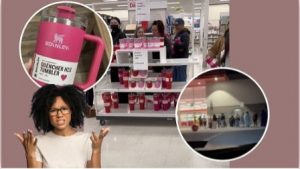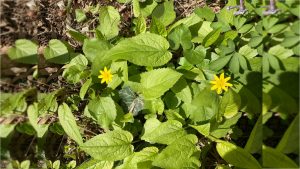Learning to cope with the shadow aspect of the world to achieve a state of harmony and creativity
These reflections are the 3rd and for the time being the last ones about the environmental aspects of multi-award-winning Japanese animator Hayao Miyazaki movies, who is very deservingly considered to be one of the most influential filmmakers of our times. Here we are looking at his first Oscar-winning animated feature film, Spirited away (2001), which the Hungarian cinema-goers know under the title Chihiro szellemországban. As in most of the present author’s post, the suggestion is repeatedly made that a viable way of directing people’s attention to the environmental cause is not by encouraging them to vanquish evil, but by hinting examples about what it takes to learn a new way to live – just as the young heroin in Miyazaki’s movie, Chihiro did.
This very engaging yet unusual adventure movie takes a different angle to viewing humanity’s perspectives on our planet. Here Miyazaki focuses on the future generations whose resources we are consuming but is less concerned about the consequences of the exhaustion of our physical resources. In one of his interviews, he mentions that he hopes that the predictions about the downfall of our civilization based on consumption were wrong and this collapse is going to take place much sooner, so that humanity can reiterate its goals and values in an earlier stage of its demise. In this reckoning he makes an interesting observation – he is aware that his art, animated filmmaking is the very product of a consumerist culture and admits that this is an obvious self-contradiction that he cannot resolve but claims that he is open to let go of his vocation when the time comes.
With this movie Miyazaki offers a solution to what he sees to be the greatest problem we are causing to future generations by bringing them up in an atmosphere of constant gratification and in the highest levels of comfort. In his own words: “Today children feel shielded, distanced and protected from reality, they have a vague sense of what it means to be alive, their only solution is to inflate their week sense of self.” In the movie this phenomenon is personified by 10-year-old Chihiro, whose character was inspired by a real girl from Miyazaki’s circle of acquaintance. The story is basically an account on her personal growth once she is exposed to the real world – all set into the most enchanting fantasy framework.
In the opening scene Chihiro is at the backseat of her parents’ car and hardly copes with the fact that her family is moving to a new place to live. As soon as their new home appears on the horizon, they take a turn that proves to be the wrong road, but it is right here where Chihiro’s path of no return to her spoiled-child-self begins. Miyazaki’s repeats his ‘usual’ family power-dynamics – the female figures have the right instincts and insights but are too agreeable to change the course of things while the father figure is fully empowered by the material-technological assets he possesses. The mother warns the father: “do not take shortcuts, you always get us lost” – spelling out the lesson we all know that there is no shortcut, no free lunch, no matter what technology we have at hand. The father very casually replies: “don’t worry, I have four-wheel-drive” – and certainly they do get lost in a ghost-town, an abandoned theme-park, which later comes to life in Chihiro’s experience.
The point where the story of parents and daughter take different directions is when, the parents, lending themselves to the pull of their sense of smell, find an abundant selection of freshly cooked food at a kiosk and start to eat without asking anyone’s consent. The father’s reaction to Chihiro’s protest is again coming from his same sense confidence:“don’t worry, I have cash and credit card”. While the two slightly obese parents consume meal after meal, Chihiro takes her first few tentative independent steps and encounters an odd bathhouse and a Prince Charming-type of character who later becomes her protector that she is going to need gravely after realizing that her parents are turned into pigs and are scheduled to be eaten, a boat filled with the oddest of spirits is approaching and she herself became see-through.
For the first time, life sets in under such extraordinary circumstances for Chihiro. Being the only human in the spirit-world she finds herself under the constant threat of being eaten or enslaved after falling under the spell of these magical creatures. The plethora of these familiarly unfamiliar beings is one of the factors that makes this movie an absolute winner of not only its own category. Japanese ethnic motives – spirits and deities in masks and costumes – abound but thanks to Miyazaki’s mastermind this ghostly theme-park coming to life is not taking us onto a cheap folkloric-ride, but into the most surreal realism that without having watched the movie, we cannot even fathom.
If the leading role is assigned to the emotion of hatred in Miyazaki’s Princess Mononoke discussed in a previous post, Spirited away revolves around the emotions of bravery/courage and love. When Chihiro finds herself in dire straits, courage and love are the driving forces she discovers in herself, but she still needs guidance and care from her new acquaintances who expect her to behave deservingly of their help. She has to learn to say thank you, to take the lowest position in a row and feel grateful for any attention she receives. It is not her idea to request work in the bathhouse but proves to be her first forceful statement that saves not only her life but keeps her on track of self-growth. This is the kind of recipe Miyazaki presents us for good parenting and proper education.
Amongst the bounty of shapeshifts and transformations of all sorts it is hard to tell who the characters are and whether the events take place in their minds, or we witness real action. There is a feeling that Chihiro’s Prince Charming, Haku is her awakening life-force personified as much as Chihiro is Haku’s awakening sense of identity which is other than being a lost spirit who time to time transforms into a dragon and flies away but forced to return as a mysterious spell ties him to be the apprentice to the bathhouse chief, the witch Yubaba. There are fewer explicit environmental elements in this movie compared to Princess Mononoke – one of them is that Haku’s aimless wondering comes from the fact that he is a river spirit but since his river was dammed by humans, he lost his home and with that was gone his sense of belonging.
Another element Miyazaki uses to create his fantasy world is space, Ma 間, which for the Japanese psyche is not an empty vacuum. The Western mind is governed by horror vaqui, the fear of emptiness and this is why Miyazaki is most often critiqued for using up too much screen time for action-free monotonous details. Boredom in present author’s definition is space that we lack creativity to fill. We are so absorbed by the world of objects that overstimulates our senses that we run out of our false confidence when we are deprived of this constant source of “entertainment”. With our best intention this is what we try to provide to the future generations and with that we keep them entrapped in a sluggish existence where the price they pay for never falling is that they never experience their own powers that could enable them to rise. As Miyazaki summed it up: “I think children would be healthier if they had enough space in their lives to be more fulfilled, as they could see something mysterious and pretty and wonder what it was.”
Photo credit: Chihiro voyaging in the spirit world in the company of mysterious creatures – the famous action-free train ride scene enhanced by Joe Hisaishi’s music that allows our own spirit to open up to a sense of eternity; source: wallpapers.com






